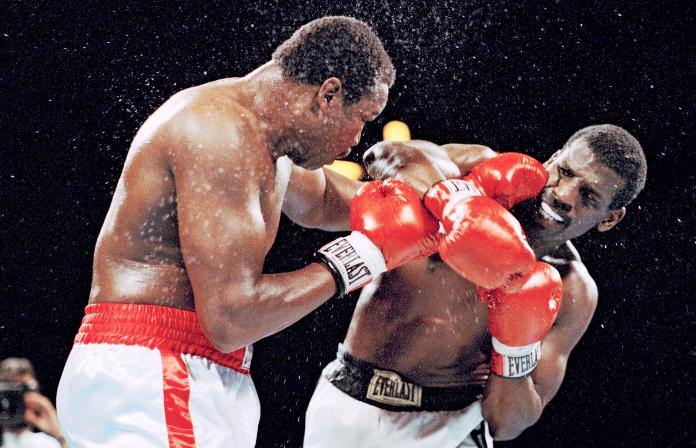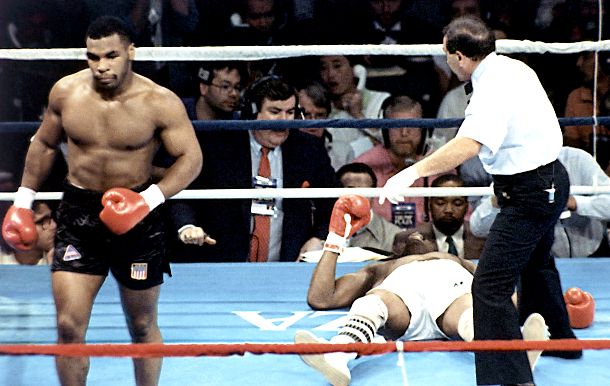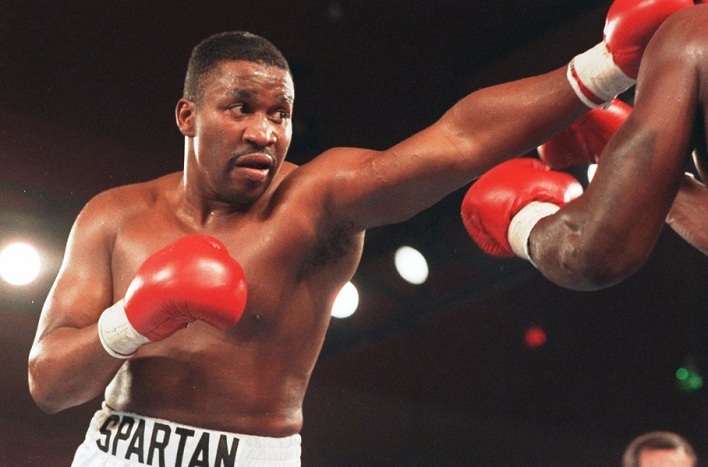Undisputed Chaos
The other week saw one of the most compelling match-ups boxing has to offer finally happen: “Supremacy” — Gennady Golovkin vs Saul “Canelo” Alvarez. The significance of this long-awaited bout rested largely on the fact that everyone knew that these two boxers were the very best in the middleweight division. Right now, at 160 pounds, no one else matters. Over the last four years, Golovkin had largely decimated the division; the only contenders he hadn’t vanquished were the ones who refused to face him. He possessed the IBF, WBA and WBC middleweight belts, while Canelo held the lineal title. This was, clearly, a showdown for the undisputed world middleweight championship. Or was it?

In fact, just hours before Golovkin and Canelo gave us a truly excellent 12 round battle, undefeated Billy Joe Saunders successfully defended his WBO middleweight title against Willie Monroe, winning a unanimous decision and notching his third consecutive championship win. So, presumably, with Golovkin and Alvarez fighting to an unpopular draw verdict after 12 hard-fought rounds, there remains three men with legitimate claims to the 160 pound world title. Instead of getting closer to a consensus on who the real champion is, when it comes to the middleweights, we are in the same place we were before these two matches happened. Namely, a single, undisputed champion does not stand alone atop the division.
As it is with every other weight class. Flash back a few weeks ago to a very rare achievement when Terrence Crawford, holder of the WBO and WBC titles in the super lightweight division, swept aside IBF and WBA ruler Julius Indongo to become just the third man in history to hold all of boxing’s “Big Four” sanctioning belts. That’s right. Believe it or not, Crawford is only the third fighter to accomplish this. And with each of the four governing bodies naming a minimum of one titlist across 17 (that’s right, 17!) weight categories – not to mention various pointless distinctions between “regular,” “super,” “interim,” “diamond” and “emeritus” champions – the anointment of one undisputed king will continue to be a happening as rare as Halley’s Comet.

Simply put, the scenario of someday going back to having a single, undisputed champion in every division, as desirable as that may be, is likely impossible. In practice, the requirements of each governing body set against the promotional and contractual obligations inherent to the business of boxing, will likely always prevent a single fighter from capturing and keeping all four belts, with titles fragmenting far more easily than they are ever unified. And, as if to prove this point, Crawford has already chosen to vacate the IBF title, meaning he held all four belts for a grand total of 11 days.
Unfortunately, this is in keeping with past precedent. Middleweight champion Bernard Hopkins, who became the first man to unify all four belts following his blockbuster clash with Oscar De La Hoya in 2004, managed a single defence before losing to Jermain Taylor, who was promptly stripped by the IBF. Now joined by Crawford, these are the only men in boxing history to achieve the feat of simultaneously holding all four belts, although the late 1990s and early 2000s saw Lennox Lewis, Roy Jones, Kostya Tszyu, O’Neil Bell, Winky Wright, Cory Spinks and Zab Judah widely recognized as “undisputed champions” of their divisions, despite not holding the WBO strap.

But whether these men were ever truly “undisputed” is debatable. For while it’s now accepted that there are four legit sanctioning organizations, it’s far less clear precisely when the WBO gained recognition as a member of this group. For example, when Pernell Whitaker unified the WBC, WBA and IBF lightweight titles in 1990, the WBO existed but was not yet viewed as legitimate. By the time Kostya Tszyu performed the same feat at 140 a decade later, the WBO was more widely respected, with a plethora of modern great fighters – including Johnny Tapia, Marco Antonio Barrera, Naseem Hamed, Joe Calzaghe, Dariusz Michalczewski, Oscar De La Hoya and Winky Wright – establishing themselves as legit world champs by virtue of their WBO status.
In other words, aside from Hopkins, Taylor and now Crawford, there’s little consensus as to which champions from the last few decades should be regarded as “undisputed,” depending on which source you read, and on whose definition you accept at a given point in history.
With the relative dearth of fighters able to navigate the minefield of boxing politics in order to become the “undisputed” ruler of their weight, fans and scribes also appeal to the notion of a “lineal” champion to resolve the issue of divisional supremacy. The lineal championship functions much the same as a royal bloodline: you are “the champ” by virtue of the fact that you beat the champ, who beat the champ, who beat the champ … all the way back (in theory) to the original.

The advantage of this is that it circumvents the political chicanery of the alphabet bodies. The drawback though comes packaged with the lack of tangibility: since lineal status is conceptual rather than concrete, and depends on historical linkage rather than “official” recognition, sooner or later it diverges from the sanctioned titles. And though the lineal championship carries more historical value, it lacks the visible force that comes with wearing a big shiny belt.
Muddying the waters further still is the fact that situations arise where rival lineal and undisputed champions exist at the same time. A classic example of this occurred in the late 1980s, after Michael Spinks defeated Larry Holmes, who was the IBF and true heavyweight champion. Later, Spinks was stripped by the IBF for refusing to fight their top contender in favour of a more lucrative bout, creating an absurd circumstance where the boxer holding the most legitimate claim to the heavyweight title didn’t own a single one of the official belts. Meanwhile, a new force by the name of Mike Tyson blitzed his way through the rest of the division, collecting the WBC, WBA and IBF belts in order to become “undisputed” champion, the paradox being that Tyson’s status as the true ruler of the big men was legitimately disputed by the lineal champion, Spinks.
Fortunately the mess was resolved when the two met in the ring in June of 1988 and in an event billed as “Once And For All,” Tyson knocked out Spinks in 91 seconds to settle the argument. But in more recent times we haven’t always been lucky enough to witness such a conclusive resolution.

The situation in the light heavyweight division over the last two decades provides a case in point. In 1999, WBC and WBA belt-holder Roy Jones Jr. defeated IBF counterpart Reggie Johnson to unify the three titles, and in 2002 The Ring magazine presented Jones with their inaugural light heavyweight belt. Commentating on the Crawford vs Indongo telecast for Sky Sports, former middleweight contender Matthew Macklin recited a popularly held misconception when he stated, incorrectly, that Roy Jones “was undisputed champion for many, many years.”
In fact, Macklin’s description and The Ring’s designation of Jones as their champion both ignored the stronger lineal claim of German-based Pole, Dariusz Michalczewski. Two years prior to Jones, Michalczewski had also unified three titles, adding the WBA and IBF straps to his WBO belt by defeating Virgil Hill in June, 1997. Michalczewski immediately dropped the WBA and IBF championships that Jones subsequently acquired, but he successfully defended the WBO and lineal title a further 14 times, before finally losing to Julio Gonzalez in 2003.
Jones’ supreme talent and almost universal recognition as the best pound-for-pound fighter for much of that time led many observers to simply overlook Michalczewski and his more valid claim as the true light heavyweight king. And for years a potential bout between the pair was discussed, but with Michalczewski content to defend his lesser-regarded WBO belt in Germany, and with Jones staunchly refusing to contemplate travelling to Europe, the matter was never resolved between the ropes and the mess left behind still resonates today.

In April 2008, Bernard Hopkins and Joe Calzaghe clashed in a bout widely described as being for the lineal championship of that division, by virtue of the fact that Hopkins had defeated Antonio Tarver, who had defeated Jones. This was only true though if you were willing to ignore the less glamorous claim offered at the time by Zsolt Erdei, whose lineage stretched back to Michalczewski, via Julio Gonzalez. In the end, both Calzaghe and Erdei vacated their championships without ever losing in the ring as Calzaghe retired while Erdei moved up to cruiserweight, and almost a decade later we find ourselves pretty much back where we started.
Until just a few days ago, Andre Ward held the position previously occupied by Roy Jones: widely regarded as the world’s pound-for-pound No.1 boxer, he was also the WBA, IBF, and WBO 175 lb champion, though crucially, rival WBC belt-holder Adonis Stevenson held the stronger claim as lineal champion. Following his first-round demolition of Chad Dawson in 2012, Stevenson became known as “the man who beat the man,” but much like Michalczewski before him, a lack of ambition in his choice of opponents has made it easy for the fight fraternity to overlook his status. And now, with Ward’s retirement, the titles have fragmented again and the opportunity to crown a truly undisputed ruler is gone, leaving us back in a chaotic situation with Stevenson’s claim being the only one that holds water.

Meanwhile the current situation at heavyweight has echoes of the Tyson-Spinks episode, with IBF and WBA titlist Anthony Joshua’s status as the number one man effectively hinging on Tyson Fury’s return to the ring. Whether Fury still considers himself to be an active boxer seems to depend which way the wind is blowing, though should he return anytime in the near future, his 2015 victory over Wladimir Klitschko gives him a legitimate claim to being the true ruler of the heavyweight throne.
Unfortunately for boxing fans, identifying a single, incontrovertible champion in every weight class is likely to remain a pipe dream. The lack of a centralized governing body means that controversy will continue to surround differing interpretations and competing interests, and it’s likely that a consensus view from within the boxing community regarding who the true champions are may be the best solution we have going forward. Otherwise, the only route to clarity, really, is to ensure that the best fight the best as often as possible.
In the meantime, we wait for a rematch between Golovkin and Alvarez and wonder if any bouts in the interim might involve Billy Joe Saunders. And we pay tribute to Terence Crawford, the WBC, WBO, WBA, IBF and lineal super lightweight champion. At 140 pounds, he stands alone. Let’s just hope we don’t have to wait another 12 years for the next truly undisputed boxing king. — Matt O’Brien






Insightful and concise summary of a very convoluted issue.
Nice job.
Perhaps we should not worry so much about belts and give someone the title of undisputed when they are the No. 1 in the division and have beaten every legitimate contender.
When Buster Douglas kayoed Tyson he was technically the undisputed heavyweight champion. Yet I don’t think anyone really believed he was the No. 1 or even better than Tyson, but simply caught Tyson unprepared.
The best thing is to not mention the ol’ lineage thang when talking to casuals. Even Joe Soap knows the belts don’t mean much.